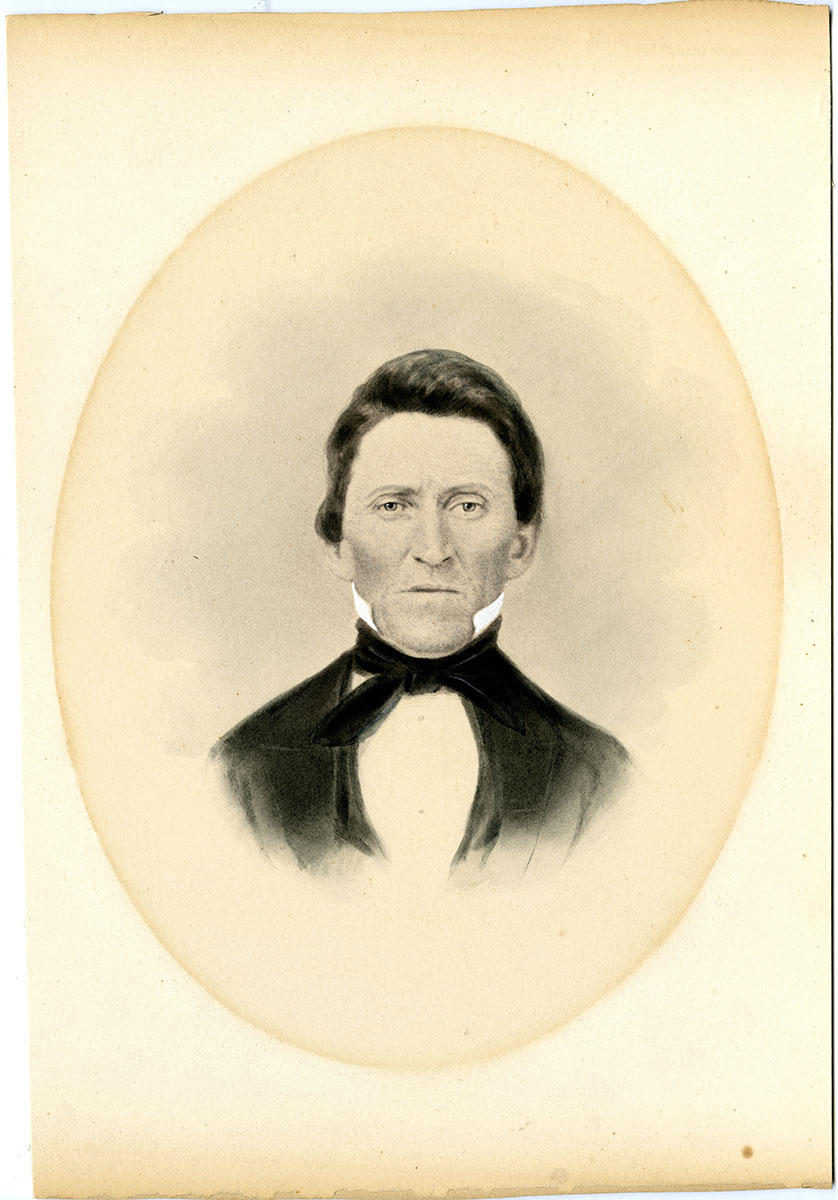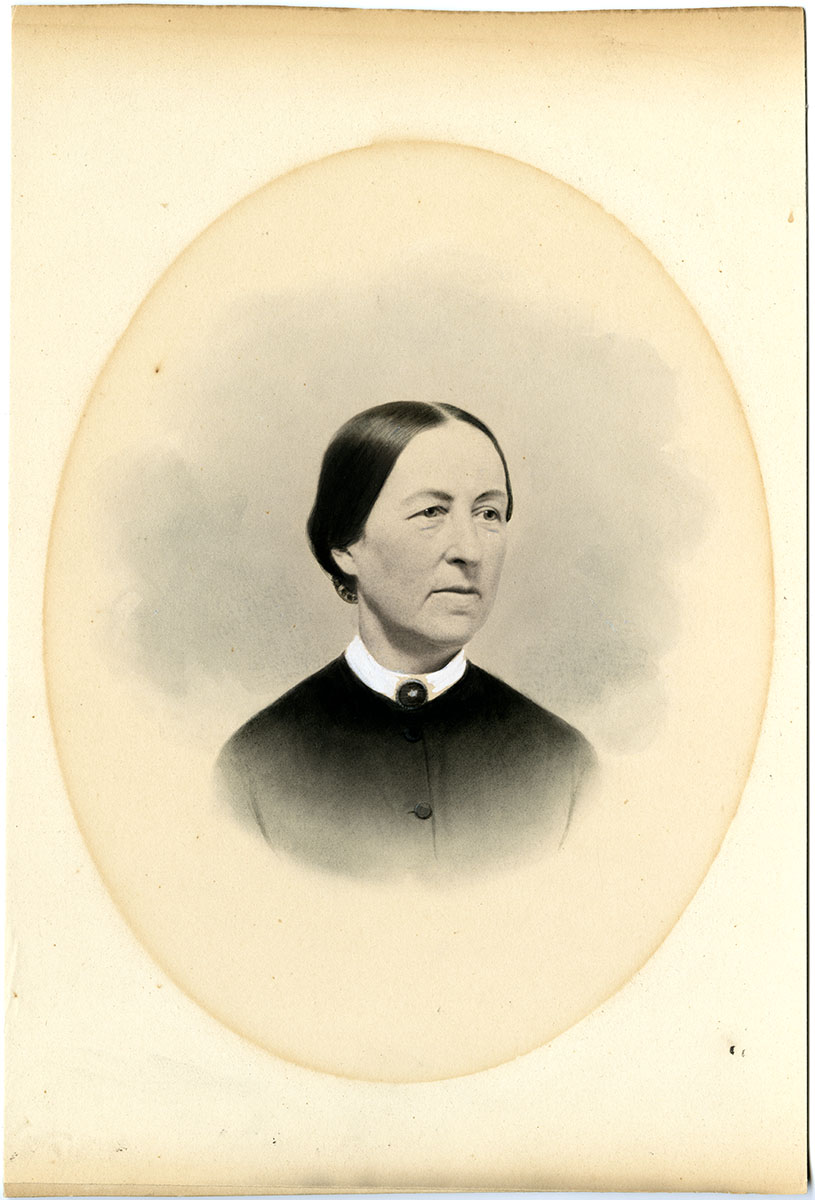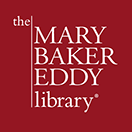

Hand-colored salt print vignettes of Erastus Baker and Mary (Glines) Baker, circa 1845.
(P00322 & P00321)
This month’s featured items from The Mary Baker Eddy Library Collection are two hand-colored photographic prints of Mary Baker Eddy’s first cousin, Erastus Baker (1805-1863) and his wife, Mary (Glines) Baker (1814-1879). Erastus was the son of John Baker (1763-1832), the eldest brother of Eddy’s father, Mark Baker (1785-1865).
The hand coloring of photographic prints was the next major advancement in photography following the development of the daguerreotype in 1839. The first United States patent for coloring daguerreotypes was granted just three years later, in March 1842. A slew of patents related to hand coloring would be granted over the next decade, each one seeking to improve the process.
The portraits of Erastus and Mary are examples of hand-colored salt prints, the result of a process developed by William Henry Fox Talbot (1800-1877), a British scientist and photography pioneer. The process involved treating paper with a solution of salt and silver nitrate; the paper was then exposed to a photographic negative under a UV light source (sunlight). A key characteristic to help identify a salt print is the matte finish and a lack of surface gloss.1 The matte surface was also more receptive to paint, and in this instance Erastus’s clothing and hair, as well as Mary’s clothing, have been hand colored.
With the development of colorized photographs, lifelike portraits became much more affordable. A portrait had long been a symbol of wealth and prestige, but now owning one was no longer the purview of the wealthy. Photography made portraiture accessible to the masses; hand-coloring represented a simple and inexpensive way for America’s middle-class to emulate the elite.2
Erastus was born in Bow, New Hampshire, and later moved to the town of Conway, where he worked as a farmer. In 1832 he married Mary Glines and then in the late 1840s he and his family moved to the town of Eaton Centre, where he became an active member of the community, serving as town clerk and postmaster. Erastus and his children were close to Mark Baker and his family.
One of Erastus’s daughters, Harriet “Hattie” Baker (1835-1903), visited and corresponded with her cousin Mary Baker Eddy regularly in the 1870s. She also took Primary class instruction in Christian Science healing with Eddy in the summer of 1876.
In 1907 another daughter of Erastus, Eliza (Baker) Manson (1840-1917), responded to the national publicity surrounding the “Next Friends” litigation—an unsuccessful lawsuit brought against Church officials and others in order to prove Eddy mentally incompetent and gain control of her financial assets. Sadly, it was also a family affair, for the suit was filed on Eddy’s “behalf” by her son, her nephew, and an adopted son.
Manson wrote this to Eddy:
I have to recall myself to you, perhaps, as a daughter of Erastus Baker, who often visited your father, grand-uncle Mark Baker, after he left Concord to live in Conway; but I feel I won’t intrude in writing you a word of sympathy in this disagreeable suit, which must be very annoying to you. Of course I understand that you are peculiarly sustained by a great faith and calm uplift, but a trial it is even then to have one’s privacy intruded upon, and it seems to me that it is in a measure an outrage. I hope that you will not be disturbed by it and that the firm arm that is about us all will give you the strength which has heretofore sustained and guided you in giving a light in many lives and a spiritual consolation to a multitude who already call you blessed. With a firm belief that the Spirit will now, as always, conquer, and many messages of love, Your cousin ….3
You can view the extant correspondence between Eddy and Hattie Baker online at mbepapers.org If you would like to explore other resources in our collection about Mary Baker Eddy, please visit the finding aids page on our website. If you have any questions about the Baker family or the life of Mary Baker Eddy, please feel free to submit a question.
- See Dusan C. Stulik and Art Kaplan, The Atlas of Analytical Signatures of Photographic Processes. (Los Angeles: Getty Conservation Institute, 2013).
- Stanley B. Burns, Forgotten Marriage: The Painted Tintype & the Decorative Frame, 1860-1910: A Lost Chapter in American Portraiture (New York: Burns Press, 1995).
- “Letters To Our Leader,” Christian Science Sentinel, June 8, 1907.

